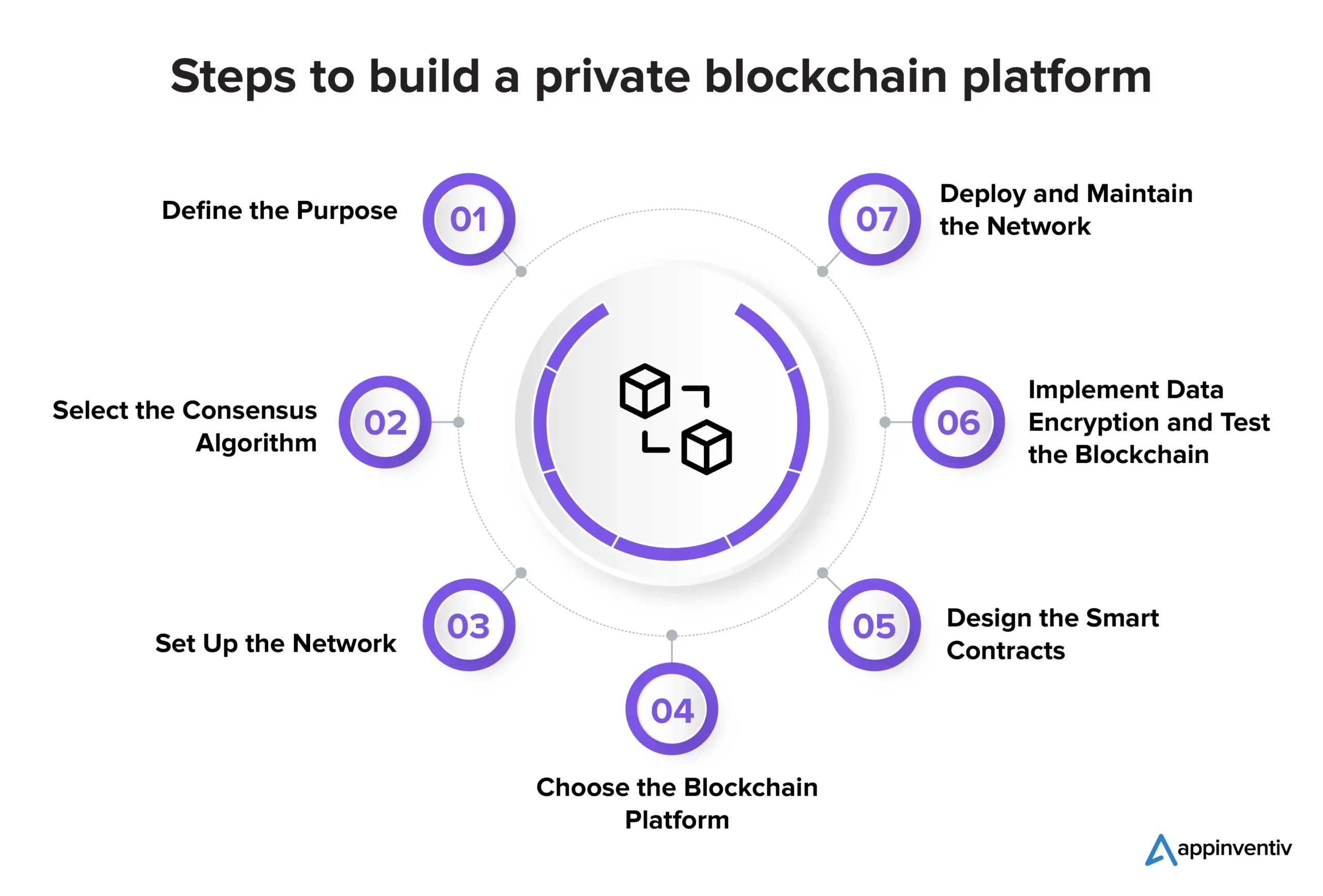- Published on
Building a Private Blockchain Network Step by Step
- Authors

- Name
- Adil ABBADI
Introduction
In recent years, blockchain technology has gained significant attention for its potential to transform various industries. While public blockchains like Bitcoin and Ethereum have made headlines, private blockchains have also gained traction due to their ability to provide a secure, decentralized, and transparent way to conduct transactions within a closed network. In this blog post, we will take you through a step-by-step process of building a private blockchain network from scratch.

- Step 1: Choose a Blockchain Platform
- Step 2: Set up the Network Architecture
- Step 3: Set up the Nodes
- Step 4: Configure the Network
- Conclusion
- Ready to Build Your Private Blockchain Network?
Step 1: Choose a Blockchain Platform
The first step in building a private blockchain network is to choose a suitable blockchain platform. Popular options include Hyperledger Fabric, Corda, and Ethereum (with modifications for private networks). For this example, we will use Hyperledger Fabric.
Why Hyperledger Fabric?
Hyperledger Fabric is an open-source blockchain platform that provides a modular architecture, allowing developers to build and deploy private blockchain networks with ease. It supports smart contracts, has a robust security framework, and is highly customizable.
Step 2: Set up the Network Architecture
The next step is to design the network architecture for your private blockchain network. This involves defining the number of nodes, their roles, and the communication channels between them.
Network Components
A typical private blockchain network consists of the following components:
- Orderer Node: Responsible for ordering transactions and creating blocks.
- Peer Nodes: Maintain a copy of the ledger and participate in the consensus mechanism.
- Client Node: Provides access to the network for external applications.
Network Topology
For this example, we will create a simple network with one orderer node, two peer nodes, and one client node.

Step 3: Set up the Nodes
Now that we have our network architecture in place, let's set up each node.
Orderer Node Setup
To set up the orderer node, we need to create a Docker container with the Hyperledger Fabric orderer image.
docker run -d --name orderer.example.com hyperledger/fabric-orderer:latest
Peer Node Setup
Similarly, we set up two peer nodes using the Hyperledger Fabric peer image.
docker run -d --name peer0.example.com hyperledger/fabric-peer:latest
docker run -d --name peer1.example.com hyperledger/fabric-peer:latest
Client Node Setup
For the client node, we use the Hyperledger Fabric SDK to create a simple client application.
const { FileSystemWallet, Gateway } = require('fabric-network')
const wallet = new FileSystemWallet('./wallet')
const gateway = new Gateway()
gateway
.connect({
networkUrl: 'grpc://localhost:7050',
chaincodeId: 'mychannel',
wallet,
})
.then(() => {
console.log('Connected to the network')
})
Step 4: Configure the Network
With all nodes set up, we need to configure the network by generating certificates, creating a channel, and deploying a chaincode.
Certificate Generation
Using the Hyperledger Fabric CA, we generate certificates for each node.
fabric-ca-client enroll -u http://example.com:7054 --csr.names "C=US,ST=State,L=Locality,O=Organization,CN=orderer.example.com"
fabric-ca-client enroll -u http://example.com:7054 --csr.names "C=US,ST=State,L=Locality,O=Organization,CN=peer0.example.com"
fabric-ca-client enroll -u http://example.com:7054 --csr.names "C=US,ST=State,L=Locality,O=Organization,CN=peer1.example.com"
Channel Creation
We create a channel using the peer channel create command.
peer channel create -c mychannel -f ./channel-artifacts/channel.tx
Chaincode Deployment
Finally, we deploy a simple chaincode using the peer chaincode deploy command.
peer chaincode deploy -c mychannel -n mychaincode -v 1.0 -p ./chaincode
Conclusion
Building a private blockchain network from scratch requires careful planning, configuration, and setup of nodes, certificates, channels, and chaincodes. In this blog post, we have taken you through a step-by-step process of building a private blockchain network using Hyperledger Fabric. By following these steps, you can create a robust and secure private blockchain network for your organization.
Ready to Build Your Private Blockchain Network?
Start building your private blockchain network today and unlock the potential of blockchain technology for your organization.
